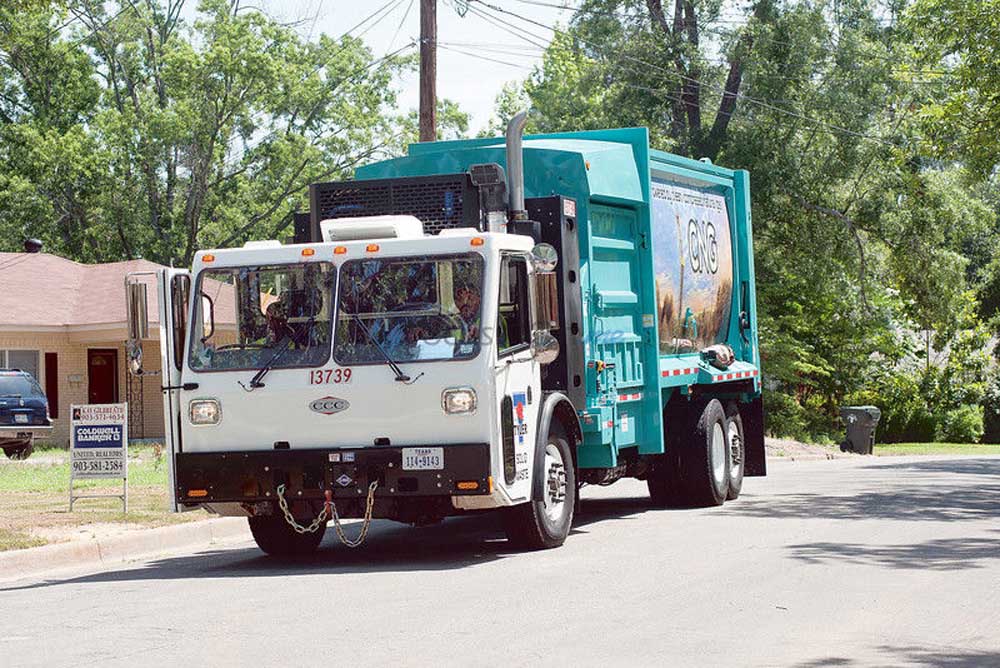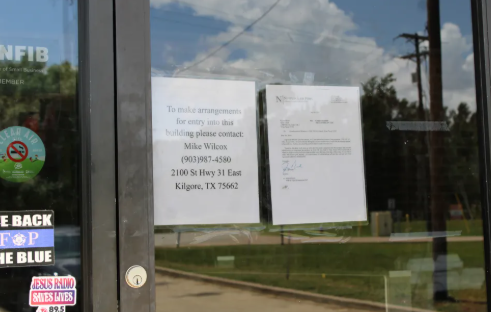Smith County Animal Shelter addresses euthanasia concerns, calls for community support
Published 5:20 pm Sunday, March 2, 2025

- Amber Greene, supervisor of Smith County Animal Control, carries puppies rescued from a dogfighting operation in north Tyler. (Jennifer Scott/Tyler Morning Telegraph)
Following the recent euthanasia deaths of 10 dogs from a suspected dogfighting case, Smith County Animal Control Supervisor Amber Greene is addressing concerns from the community.
The dogs were the remaining animals seized from the fighting bust, which occurred in September and resulted in two arrests. Earlier this week, Greene said euthanasia was the shelter’s only remaining option.
Trending
In a statement, she outlined the shelter’s euthanasia policies, the challenges it faces, and ways the public can help reduce the strain on the system.
“We are sometimes asked the question, ‘Do you euthanize animals for space?’ It is a complex question to answer, but because it is an important issue for many people, we want to provide a transparent explanation of our shelter’s situation and our decision-making process regarding euthanasia,” Greene said.
“Our shelter does its best each year to attempt to treat every medically treatable animal, although we take into account the likelihood of treatment success, the animal’s age, behavior, quality of life, and whether the amount required to treat is a reasonable and responsible use of funds for one animal. Unfortunately, there are many animals who come to us with extremely severe injuries or illness, and if the suffering is irremediable, euthanasia is usually the most humane outcome.”
Behavioral issues also play a role in euthanasia decisions, particularly when public safety is a concern.
“In terms of behavior issues, our shelter’s number one priority is public safety. If there is a dog that we believe may pose a threat to the safety of an adult or child, we generally will not place that dog up for adoption, although depending on the behavior, the dog may still be a candidate for rescue if a rescue organization can commit to finding the dog a very particular home where the behavior can be safely managed. If this isn’t an option, however, then euthanasia is usually the outcome.”
Greene explained the majority of euthanasia cases at the shelter fall into one of three categories:
Trending
• An irremediably suffering animal.
• A newborn animal who fails to thrive.
• A dog with a safety risk.
“These are the decisions shelters are faced with every day. Our shelter believes every dog is an individual and we take many factors into account when attempting to balance public safety with lifesaving,” she said.
However, beyond medical and behavioral concerns, there is another set of factors that influences euthanasia decisions — space and resources.
“Even fractious dogs could be placed in a sanctuary with a very secure enclosure, one where we could practically guarantee the dog would not pose a threat. So technically, any dog is ‘savable,’ but finding the homes to do so can be extraordinarily difficult,” Greene said.
The shelter is currently experiencing increased intake while adoptions are declining.
“In line with national trends, our shelter is seeing increased intake, along with decreased adoptions,” Greene said. “Industry experts believe both of these trends are the result of economic conditions. Rental restrictions don’t help either — many of the breeds that frequent shelters also are banned from rental housing and insurance policies.”
With more animals coming in than leaving, shelters get crowded quickly.
“When more animals enter shelters than leave, shelters get very crowded, very quickly — especially shelters like ours that were built decades ago when the human population of our county was much smaller.”
Efforts to reduce euthanasia
To combat the space crisis, the shelter relies on several strategies, each with its own limitations.
“Rescue organizations often pull animals from shelters and adopt them through their networks,” Greene said. “Unfortunately, most rescues are also very full for the same reasons shelters are, and it is increasingly rare for shelters to have any openings to take animals from other organizations.”
When rescues are unavailable, the shelter turns to waived adoption fees as a last resort.
“Our shelter offers waived adoption fees when we get full. Historically, this has been used when the above options fail and is usually enough to help us avoid euthanasia for space. They’re becoming less effective for a variety of reasons, including reduced interest in adopting due to the economy and other factors mentioned above.”
But when all else fails, euthanasia for space may be the only option, Greene said.
“There is a point where continuing to cram more dogs in kennels becomes unsafe and inhumane,” she explained. “As an organization that exists to protect animal welfare and prevent suffering, we cannot create a hoarding situation within our own walls.”
If euthanasia for space becomes necessary, the shelter prioritizes certain cases.
“When deciding which dogs should be euthanized to create capacity, we will generally select dogs that have a behavior concern that falls into the gray area of safety mentioned above. We may then select dogs that have severe anxiety in kennels and are unlikely to get adopted anytime soon due to their breed or age. Our shelter is usually filled to the brim with huskies, shepherds, pit bulls, and their mixes, leaving these types of dogs most challenging to place due in part to the sheer number of them, as well as rental housing restrictions targeting these breeds,” Greene said.
While it remains rare, Greene warned euthanizing healthy animals with no behavior or medical issues may become more common if current intake and adoption trends continue.
“Despite the challenges, our shelter is doing our very best to adapt, innovate, and provide the best outcomes possible, for as many animals as possible,” she said. “Our community can rest assured that our shelter is full of staff who care deeply for animals and are working tirelessly to avoid negative outcomes.”
While the shelter continues working to find solutions, Greene acknowledged public criticism can take a toll on staff.
“When people publicly criticize or ‘bash’ an animal shelter, it can have a significantly negative impact on shelter employees, leading to feelings of demoralization, burnout, compassion fatigue, decreased job satisfaction, and even personal attacks, making it harder for them to effectively do their job and care for animals in their charge; essentially undermining their dedication to helping animals in need,” Greene said.
How the community can help
Greene emphasized the community plays a critical role in reducing shelter overcrowding.
“Here’s how to help:
“Adopt your next pet. ‘Designer dogs’ from breeders are cute, but dogs in shelters can provide the same joy and companionship and are in great need.
“If you find a lost dog, they very likely have an owner. If you can hold onto them for at least 48 hours while actively looking for the owner before bringing them to the shelter, it can make a huge difference. Many dogs are reunited without having to impact our kennel space.
“If your pet gets lost, look for them proactively. Get your pets microchipped and put tags on them, so we can quickly return them to you if they go missing.
“Volunteer. From helping staff with shelter chores, walking dogs, adoption counseling and so much more, volunteers make a huge difference.
“Foster. Taking animals into your home can create space, help young animals grow up, help animals through behavior issues, and allow sick or injured animals to heal.
“Donate. There are many programs that rely on donor dollars to function, especially our local rescue organizations.”
To view adoptable pets at Smith County Animal Control, visit www.smith-county.com/government/departments/animal-control/animal-listings.
The shelter is located at 322 East Ferguson St. in Tyler and is open from 1 to 5 p.m. Monday through Friday. Adoption applications can be submitted in person or emailed to shelter@smith-county.com. For more information, call 903-266-4303.






